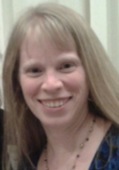What’s the Big Idea?
by Connie Rivera
You may have seen one version or another of Did You Know?, a video that went viral in 2007. I’ve seen it more than once during presentations since WIOA regulations came out. The key take away for me was the idea presented in the video that “We are currently preparing students for jobs that don’t yet exist, using technologies that haven’t been invented, in order to solve problems we don’t even know are problems yet.”
How can we teach our students in such a way that they will be prepared for something we don’t even know about yet? I think that one of the most important things we can do is base our instruction on big mathematical ideas – making connections to core content rather than getting too caught up in answers to specific problems. Other disciplines use the phrase enduring understandings, which I think highlights that an understanding which is core and true today lasts into the future.
When I was first a math student, math was full of disconnected topics that I needed to memorize. I was decent at that, so I just made it through. However, we now know from research classics like The Teaching Gap and Adding It Up: Helping Children Learn Mathematics that effective instruction connects understandings across different math content and across levels. This quote validates why teaching differently, with big ideas always in sight, matters. As Hiebert and Carpenter have said, “We understand something if we see how it is related or connected to other things we know[1]… The degree of understanding is determined by the number and strength of connections”[2]. Let’s link instruction and understanding to big, central ideas for our students!
You may be thinking OK, tell me what those big ideas are and I’ll teach them! But that’s the thing – there is no single answer to what the big ideas are, and big ideas are bigger than the size of a lesson, or even a unit. Still, we can plan for them when we are planning our instruction. One way I’ve collected lists of big ideas is through conversation with other teachers about what those big ideas are and how understandings connect . I like to use sticky notes for this brainstorm, with one sticky for each idea, so we can organize and re-organize our ideas. At first we come up with topics like basic operations, fractions, and equations. Then we group them and think about what’s bigger and crosses into other content. Ideas connected to equivalence, place value, properties of operations, proportional reasoning, and algebraic thinking come to the surface. These are the things that are important for our students to understand. Maybe you can even have your students make connections and develop understanding by doing this same activity! (See links to articles for other lists.)
Understanding big ideas is motivating and builds ways to transfer knowledge to new problems our students will need to be prepared to tackle. To read more about big ideas, check out “Big Ideas and Understandings as the Foundation for Elementary and Middle School Mathematics” and “What is Mathematical Beauty: Teaching Through Big Ideas and Connections”. If you want to experience teaching for understanding that is connected to the big ideas, consider taking one of our other offerings.
[1] Hiebert, J., & Carpenter, T. P. (1997). Making Sense: Teaching and Learning Mathematics with Understanding. Portsmouth, NH: Heinemann.
[2] Hiebert, J., & Carpenter, T. P. (1992). Learning and teaching with understanding. In D. A. Grouws (Ed.), Handbook of research on mathematics teaching and learning (pp. 65-97). New York: Mcmillan.
==========================================================
 Connie Rivera teaches numeracy skills to adults of various skill levels, including court-involved youth and English Language Learners. She is also a math consultant, providing math strategies and support to programs implementing the College and Career Readiness Standards for Adult Education (CCSRAE). As a consultant for the SABES numeracy team, Connie facilitates trainings and guides teachers in curriculum development. Connie is President of the Adult Numeracy Network and a LINCS national trainer for math and numeracy.
Connie Rivera teaches numeracy skills to adults of various skill levels, including court-involved youth and English Language Learners. She is also a math consultant, providing math strategies and support to programs implementing the College and Career Readiness Standards for Adult Education (CCSRAE). As a consultant for the SABES numeracy team, Connie facilitates trainings and guides teachers in curriculum development. Connie is President of the Adult Numeracy Network and a LINCS national trainer for math and numeracy.
